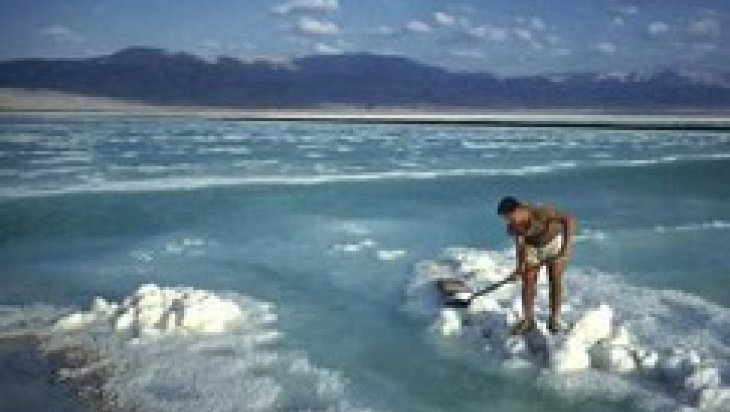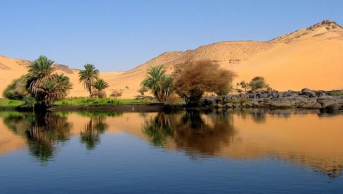The Promise of Desalination: Panacea for Water Problems in Middle East?

Desalination is defined by the International Desalination Association (IDA) as “the process of removing dissolved salts from water, thus producing fresh water from seawater or brackish water.” Through the hydrologic cycle, desalination is occurring naturally for millions of years. Commercialization of desalination, however, is a rather modern phenomenon. Discovery of new cheaper methods for desalination such as “electrodialysis” and “reverse osmosis” paved the way for pervasion of this water supply option beginning from mid-20th century.
It is certain that desalination is on the rise globally. New desalination plants are being constructed continuously all over the world. The numbers are impressive: According to IDA, as of 2013 there are more than 17,000 desalination plants worldwide. The total capacity of these plants have exceeded 80 million cubic meters per day. more than 300 million people in some 150 countries are using desalinated water.
The Middle East is one of the regions where these desalination plant constructions are concentrated. Oil-rich Gulf countries and Israel are pioneers in desalinated water use in the Middle East. Saudi Arabia, Kuwait, United Arab Emirates, Qatar, Oman and Bahrain produce around 30 million cubic meters of water per day. Around half of Israel’s drinking water is currently produced through desalination and this figure is expected to persistently rise for foreseeable future. Israel is also a significant exporter of membrane technologies to all over the world, including industrially advanced countries like USA.
However, in the midst of population pressures and challenge of climate change which forces countries to find alternative water supply options, desalination is getting popular among other countries of the Middle East, as well. Countries like Iran and Turkey, with relatively abundant water resources, are in the process of augmenting their desalination capacities.
Apart from the push factors mentioned above, a pull factor is also at play: cost of desalinating water is steadily going down. For a decade or so, desalination cost has been reduced down to 0.5 USD per cubic meter of water.
Despite this positive outlook, there are a number of significant problems associated with desalination. First of all, the cost, still, is an issue. Let alone the cost of construction of desalination plants, which can rise to billions of dollars, the cost of desalinating water is high particularly for the countries in which the cost of energy is high. This is simply because the biggest cost in desalination is energy. Intensive energy is being used in order to push water through membranes. This may not be a big deal concerning the oil-satiated Gulf states, but it is a big stumbling block for other countries to adopt desalination as a viable alternative for water supply. It is more expensive than any conventional water supply methods. Given the current cost levels, desalination cannot be a feasible alternative for countries like Syria or Yemen. Second, the environment is a central point of criticism when desalination is concerned. Although desalination is promoted by some companies as as an environment friendly alternative for water provision, from -at least- two aspects, desalination process poses risks to environment. One of them is related with the water intake. If not done properly, water intake may disturb marine life via vacuuming larvae, or small fish eggs. There are new techniques to overcome this risk, but they are rather costly and not commonplace practice in the business. The other environmental risk is the well-known brine discharge. Brine is the byproduct of desalination process, which is essentially very salty water. Due to its highly concentrated salt content, brine is heavier than the seawater, and sinks when discharged without prior treatment. This is highly fatal for the marine life particularly on the seabed. There are again novel ways to mitigate this problem. For instance, in Monterey Bay area in California, USA, California American Water Company uses underwater sprayers in order to reduce the impact of brine water. Instead of releasing brine water in high volumes through a conventional pipe, they placed a longer pipe with small holes spaced several meters apart. Again, these experimental new techniques are generally confined to fewer cases of desalination, and it is yet to be seen whether these techniques will become ordinary. And third, desalination may even cause international friction, as it was seen in the Egyptian disagreement with the proposed desalination plant in Jordan. Egypt feared that brine from the Jordanian could have damaged the wildlife in the Red Sea. Shaddad Attili, the head of the Palestinian Water Authority, has told that because of the risk of Egyptian and Saudi criticism, Israel and Jordan have agreed to pump the brine out of the desalination plant in Aqaba, Jordan to north, up to the Dead Sea.
In brief, desalination is not a once-and-for-all solution for the water problems in the Middle East. The desalination processes should be carefully designed and constantly monitored in order to keep its risks to environment at minimum. Even in this case, the economic cost is still an impediment for many countries to start using desalinated water. Because of the cost and of the risk of grave environmental damage it may bring about, desalination should be perceived as a last resort after exhausting all other options of water supply.









